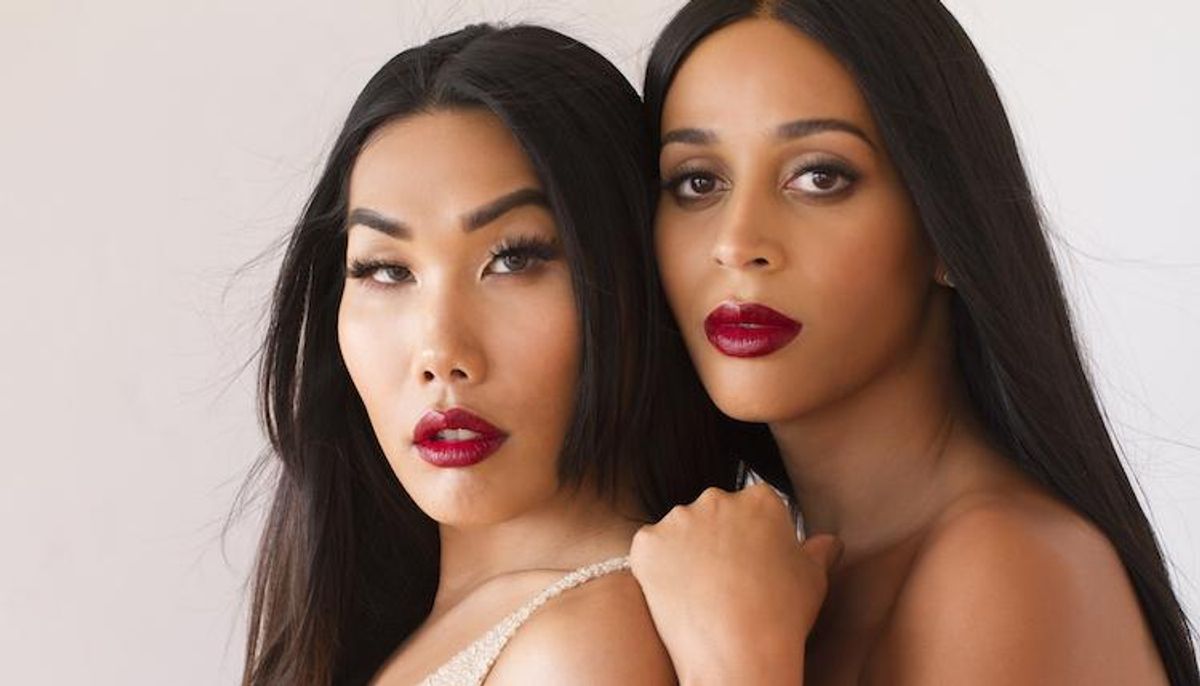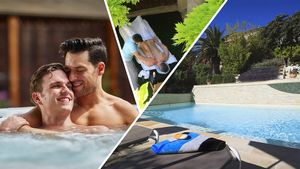It's been mere weeks since Danica Roem, a Democrat from Virginia, became her state's first openly transgender legislator. Her victory was a monumental moment for the trans community as a whole and became a rare sign of hope within a political climate buoyed by fear and discrimination.
Now more than ever, it's become essential to understand the battle that lies ahead for the LGBTQ+ community by understanding the past--and those who paved the way for us to have the freedom to celebrate these moments. By looking back, we can immortalize the trailblazers who have shaped our journey. It was only a few years ago in 2007--before gay marriage was legalized and transgender rights became a national priority--that a woman named Isis King burst out of the trans closet on national television as part of an MSNBC special called "Born in the Wrong Body," documenting her transition.
Only 22 at the time and living at the Ali Forney Transitional Living Program, Isis went on to be a contestant on the hit CW show America's Next Top Model in 2008, which was a major feat given that it was only open to female models at the time.
Related | Gallery: Gia Gunn & Isis King by Maxwell Poth
Fast forward almost a decade and Gia Gunn, from RuPaul's Drag Race season six, has also become a face for transgender community after her post-show coming out. Speaking to both of them, it's clear that although trans rights have become a national issue, we're still far from out of the woods. Together, they're reflecting on what it's like to present themselves as trans people of color to the world and the surreal experience of being on reality television at a time when a reality star literally runs the country.
For these two trans trailblazers, the start of their individual journeys come nearly a decade apart. For King, the moment of realization came to her at only 4-yearsold "As far as I can remember I was a girl, but I couldn't express that because my femininity was already a huge problem at home and school. I knew I was a girl and that I needed to internalize that [because my] family members would always make fun of me. Everyone wanted me to be rough but I wasn't that person, I was never that person," King explained just days after her 32nd birthday.
While King might've realized her identity as a child, Gunn's process began nearly two decades into her life when she dressed in drag for the first time at the age of 18. When a girlfriend called her up to suggest they go out in drag to the club, she went along with it. "It felt magical [and] nerve-wracking, but comfortable. I think that's the most important thing about that moment," she recalled. While King had to internalize her feelings as a transwoman from an extremely young age, Gunn matriculated during a time period where trans role models were already bubbling under the surface, chipping slowly away at the wall of misunderstanding.

Isis King (Photography: Maxwell Poth)
Yet, as different as their coming out experiences were, both agree that being on TV allowed them to truly find their voices as trans advocates. As a contestant on America's Next Top Model, King made the decision not to come out but was soon outed by a fellow contestant who approached her right before she made it through the semi-finals. "Once I got into the house, most of the girls were nice to my face," she explained. It wasn't until she saw the final edit and heard their one-on-ones that she was exposed to what had been happening behind the scenes.
Though trans people had been guests on shows like Maury and Jerry Springer, King marked the first time a trans person had been allowed a platform to truly tell their story on national television without the gross objectification that came with a Jerry Springer appearance. As King looks back on her time on the show, she likens it to being frozen in time--especially since people will still come up to her years later about her stint on the show. "People will come up to me and say 'you're so brave I'm so proud of you,' which is very interesting because I'm a lot different than I was back when I was on television," she admits. "They'll still assume that I'm that 22-year-old girl. Baby, I'm not that person anymore, I'm a grown ass woman."
For Gunn, her appearance on Drag Race didn't involve an outing by herself or another contestant--she didn't come out until after the season had ended. In the years since then, she's spoken about how drag helped her discover herself as a transwoman. "It can be a mind-fuck doing drag and being a gay man and having a gender attached to both of those things," she explained. "It's overwhelming to not know if this character is who you are or if this gender is who you are. It took a while for me to realize that I was a woman because of this, but I still love doing drag because now it's solely an art-form for me."

Gia Gunn in Quin black bandeau tie top and skirt. (Photography: Maxwell Poth)
As Gunn reflects on her success, she's quick to give praise to women like King who've helped clear a path for her. As she explained, "[King] gave us the clarity to know that we can walk outside and be OK." Now, with that confidence and comfort, Gunn has taken to educating people about trans issues. With hundreds of thousands of Instagram followers between them, the women are well aware of the influence they command.
They're also aware that, despite being trans women from two very different time periods, they both have the privilege of "passing," or being able to pass as cisgender in society. For King, transitioning at a young age has allowed her to live much of her life as the woman she is. Gunn sums it up best when she reflects on what it was like to be "fishy" in the world of social media: "In the social media world, [some] trans people have a lot of surgeries and look fabulous and beautiful. [They're praised] in the community because they look good! For me personally, I won't feel accepted any more or less in 5 or 10 years when I have my breasts done and my voice is a little higher." With passing, Gunn notes that while she'd "gain more respect from the outside world in terms of guys that I date or even job interviews," trans people should only "appear as male or female as you're comfortable with." Ultimately, there is no right or wrong way to "look trans." As Gunn explained, "Know what your everyday truth is. Life is a transition regardless [and] everyone's journey is different."
Photographer: Maxwell Poth
Photo Assistant: Jared Gelman
Stylist: Andrew Philip Nguyen
Stylist Assistant: Cynthia Pham
MUA/Hair: Zaheer Suk hnandan





















































































